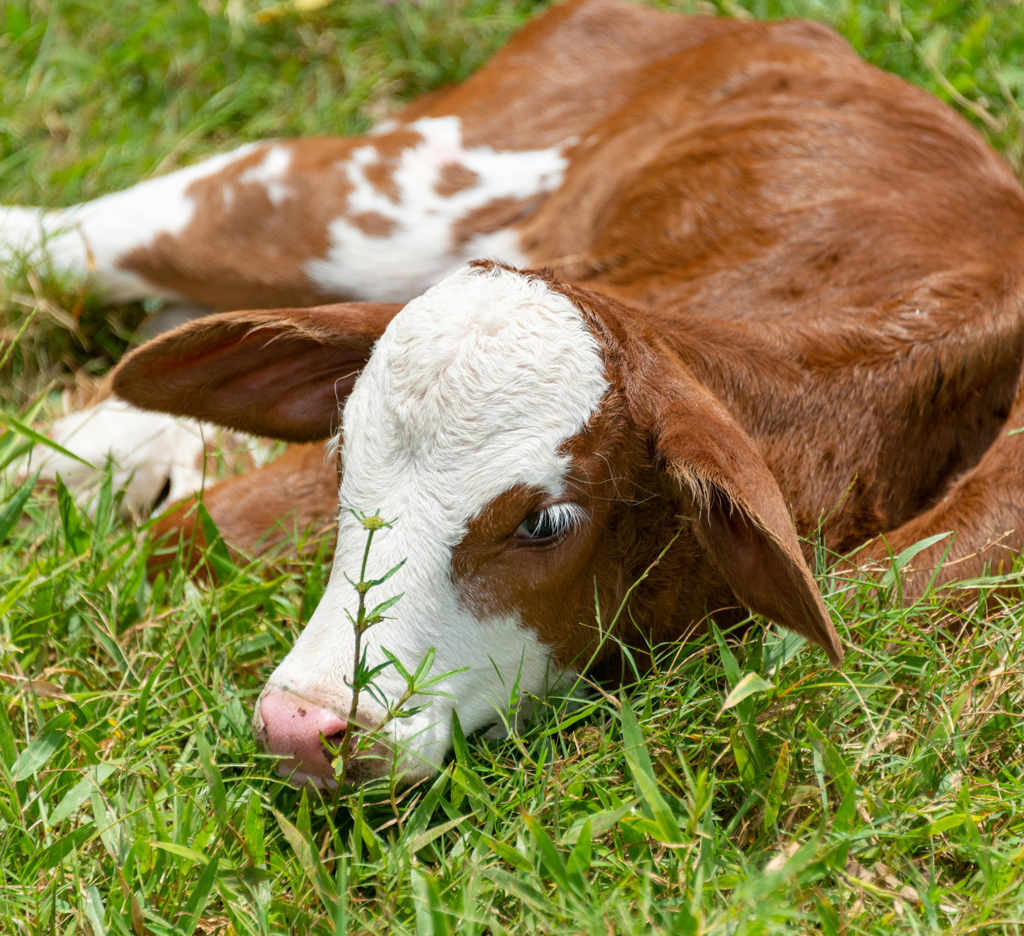Calf Health Management: Raising larger, healthier animals
Giving birth to a human child is a significant ordeal, even with access to a physician, nurses, and a sterile hospital environment. In contrast, calves are born in far less ideal conditions, facing greater risks of complications and diseases that often have long-term consequences. Dr. Kristen Edwards, Dairy Veterinarian at Tavistock Veterinarians in Ontario, explains how implementing better calf health protocols can improve animal welfare and farmers’ bottom line.

Early threats to calf health
Respiratory diseases and diarrhea together account for nearly three quarters (73%) of pre-weaning calf deaths . “Calves generally have an underdeveloped immune system in the first few weeks of life and face challenges from various pathogens in their environment,” Dr. Edwards explains. For instance, a calf might become ill with diarrhea after ingesting contaminated materials or develop pneumonia due to poor air quality.
Animals that survive past weaning despite early illnesses remain at a disadvantage throughout their lives. Pre-weaning respiratory diseases present calves with “an increased risk of culling and reduced first lactation milk yields,” says Dr. Edwards.
A prospective study published in the Journal of Dairy Science associates diarrhea with a 50 g/d reduction in average daily gain (ADG) and 325 kg less milk in the first lactation. A subsequent study demonstrates a correlation between the number of days of diarrhea, calf survival rate, and weight gain, with calves that had fewer days of diarrhea showing better figures overall.
Why colostrum management is critical
To combat these early challenges, calves depend on the transfer of passive immunity through their mother’s colostrum, which is naturally rich in nutrients and antibodies. “Feeding clean, high-quality colostrum within the first hour from birth is one of the most important things we can do for calf health,” says Dr. Edwards.
Not all colostrum is created equal, therefore it should be assessed and handled according to the Five Qs of Colostrum Management:
- Quality: The IgG content (an antibody), measured using a Brix refractometer, should be at least 25% . .
- Quantity: Feeding about 10% of body weight, so 3 litres for a Jersey calf and 4 for a Holstein calf.
- Quickness: The calf should be fed colostrum ideally within the first hour after birth (but definitely within the first 6 hours), then again after about 12 hours.
- Quite Clean: The total bacterial count should be below 100,000 cfu/mL to ensure contamination does not inhibit IgG absorption. (Admittedly, the “Q” is a bit of a stretch here.)
- Quantify: Measuring total serum proteins or serum IgG from a blood sample, ideally within the first 72 hours of life, can assess the transfer of passive immunity.
Numerous factors can compromise a calf’s ability to absorb colostrum, including being born to heat-stressed dams, as noted in a University of Florida study[JM1] [KE2] . Yet its timely administration remains paramount to prevent diseases. “Calves undergo gut closure, and as time passes, their ability to absorb the immunoglobulins in colostrum decreases,” warns Dr. Edwards.
Small changes make a big difference in calf health
Disease development is often described in medicine by the “Epidemiology Triad”—the interaction of an agent, a host, and the environment. “Effective prevention and control strategies are based on improving these interconnected elements,” explains Dr. Edwards.
Maintaining cleanliness reduces the prevalence of bacteria and other pathogens. Similarly, environments that feature low-dust bedding, reduced stocking densities, and excellent ventilation are less conducive to the spread of airborne illnesses. Colostrum management, nutrition, and trait selection through artificial insemination will, in turn, improve calf immunity and resilience.
Additional procedures may be incorporated to improve calf health monitoring and early disease detection. An ATP luminometer offers an efficient method for assessing environmental hygiene by detecting bacteria, yeast, and mould. Dr. Edwards frequently uses thoracic ultrasounds in her practice to look for lung lesions and subclinical pneumonia. She notes, “Lung lesions of 3 cm² or greater in calves before 56 days of age are associated with 525 kg less milk during their first lactation.”
Implementing such measures provides benefits throughout every animal’s lifespan. “By improving calf health, we improve their growth, welfare, milk production, and the farm’s overall profitability,” says Dr. Edwards. For starters, raising healthier animals reduces the need for culling and costly replacements. A comprehensive meta-analysis also reports that for every 100-gram increase in preweaning ADG, there’s an associated increase of 155 kg in milk in first lactation.
Switching to an entrepreneurial mindset
“Producers should view calves as a profit centre rather than a cost centre,” explains Dr. Edwards. “For example, instead of looking at feeding costs per day, consider the increased return on investment that comes from every kilogram of weight gain.”
A well-known management principle attributed to Peter Drucker states, “What gets measured gets improved.” Yet calf health data is poorly recorded on many Ontario dairy farms, a 2023 survey concludes.
“As part of our prevention strategies, improving the accuracy of data will help us implement protocol changes and reduce the incidence of disease overall,” says Dr. Edwards. She recommends meticulously recording everything related to birth, colostrum quantity and feeding times, Brix readings, serum total proteins, illnesses, all administered treatments or therapies, as well as weight gains at birth, 30 days, and at weaning. This has been a cornerstone of the calf health program she runs at Tavistock Veterinarians.
Improving calf health through better protocols, colostrum management, and environmental hygiene significantly boosts growth, resilience, and milk production. By viewing calves as a profit center and meticulously recording health data, farmers can enhance animal welfare and profitability, ensuring long-term success and sustainability in dairy farming.
